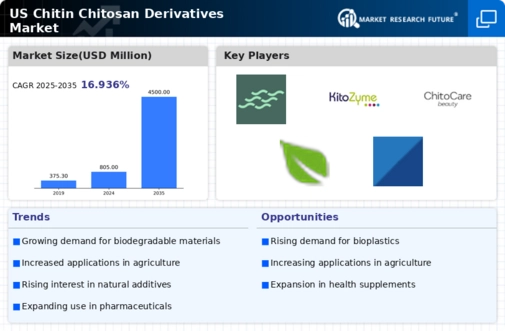The competitive landscape of the US Chitin Chitosan Derivatives Market is characterized by a diverse range of companies that are leveraging innovative technologies and expanding product portfolios to strengthen their market positions. As consumers increasingly demand eco-friendly products, the chitin chitosan derivatives sector is witnessing a surge in interest due to its applications across various industries such as food processing, pharmaceutical, agriculture, and cosmetics. The market's competitive insights highlight the significance of strategic partnerships, research and development investments, and the adaptation of product offerings to meet regulatory standards and consumer preferences.
Companies in this sector are focusing on sustainability and operational excellence as key drivers for gaining market share and enhancing their brand reputation in the US market.Green Goodness has established a strong foothold in the US Chitin Chitosan Derivatives Market with its commitment to supplying high-quality, sustainable solutions. The company's focus on eco-friendly production processes and innovative applications of chitin and chitosan sets it apart from competitors. Green Goodness has successfully built a robust distribution network, ensuring that its products are accessible to a wide range of clients across various sectors.
The company is recognized for its strong research and development capabilities, which enable it to continuously improve its product offerings and create customized solutions for specific industry needs. Its reputation for delivering high-performance products while adhering to strict sustainability standards contributes to its strength in the market.Seaweed Solutions is another notable player in the US Chitin Chitosan Derivatives Market, focusing on leveraging the natural properties of marine resources to develop high-quality derivatives. The company offers a diverse range of key products, including chitosan-based biopesticides and food preservative solutions, positioning itself as an innovative producer in the sustainable agricultural sector.
Seaweed Solutions’ strengths lie in its extensive research initiatives and collaborations with agricultural institutions, which enhance its product development capabilities. The company has also engaged in strategic mergers and acquisitions to bolster its market presence, enhancing its ability to provide integrated solutions in the chitin chitosan space. This growth strategy, combined with its focus on delivering effective, environmentally friendly products, enables Seaweed Solutions to stand out in the competitive landscape of the US market.















